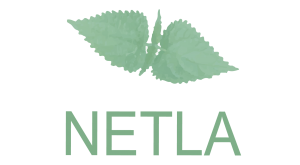Icelandic vocabulary and reading comprehension among Icelandic second language learners: Influence of age on arrival in Iceland
Keywords:
vocabulary, reading comprehension, literacy, second language acquisition, age on arrivalAbstract
The strong relationship between vocabulary and reading comprehension has long been recognized. As bilingual children tend to develop a smaller vocabulary in each language, compared to monolinguals in their only language, they frequently demonstrate a continuous deficiency in reading comprehension and academic achievement. Two prior studies with Icelandic second language compulsory school learners (Ice2) suggest that they make limited progress in the acquisition of Icelandic vocabulary across grades. However, only one of these studies was longitudinal and neither explored how vocabulary contributed to reading comprehension and its development. The majority of literacy studies with second language learners have focused on very young children or have spanned a relatively short period. The few studies that have extended over a longer period are mainly based on comparisons of achievement levels across grades, and therefore do not take advantage of the opportunity offered by longitudinal data. The main purpose of this study was to compare the shape and rate of vocabulary and reading comprehension development between Ice2 learners and age peers with Icelandic as their first language (Ice1) from grade four to grade eight, and to analyse the relationship between these two fundamental skills. Another aim was to explore the influence of age on arrival in Iceland on growth rate in vocabulary and reading comprehension among the Ice2 children. This study was part of a PhD research project (Sigríður Ólafsdóttir, 2015) in which two age groups of Ice2 learners were tested on vocabulary and reading comprehension at three time points: the younger group in grades four, five, and six, and the older group in grades six, seven, and eight. A comparison group of Ice1 age peers was tested concomitantly. Latent growth curve modelling was used to analyse the data, based on an accelerated design, which enabled a continuous developmental perspective of the children’s vocabulary and reading comprehension growth from grade four through grade eight (Duncan, Duncan, Strycker, Li, & Alpert, 1999). Our findings demonstrated that the Ice2 children had lower scores than the Ice1 peers on vocabulary measurements in grade four and the gap between the two groups widened during the study period. While both the Ice2 and the Ice1 children showed irregular improvement in reading comprehension, the gap between the two groups remained the same. The findings revealed that Icelandic vocabulary skills in fourth grade positively predicted the rate of growth in reading comprehension, for both the Ice2 and the Ice1 learners. This means that those children who started with better word skills increased their reading comprehension scores at a faster rate than those who started with poorer vocabulary. Ice2 learners’ age on arrival is a significant influencing factor in their acquisition of vocabulary and reading comprehension: The older the Ice2 learners were when they arrived in Iceland, the faster the improvement they made on their vocabulary and reading comprehension scores; whereas the younger they were on arrival, the slower the progress they demonstrated during the period of study. The implications of the findings are clear for Ice2 learners: solid Icelandic word skills are fundamental to their academic progress in Icelandic speaking schools. All Ice2 learners need effective instructional scaffolding aimed at bolstering their Icelandic word skills, and even those who have the longest residence in the country need support.
Downloads
Published
Issue
Section
License
Copyright (c) 2016 Netla - english edition

This work is licensed under a Creative Commons Attribution 4.0 International License.
